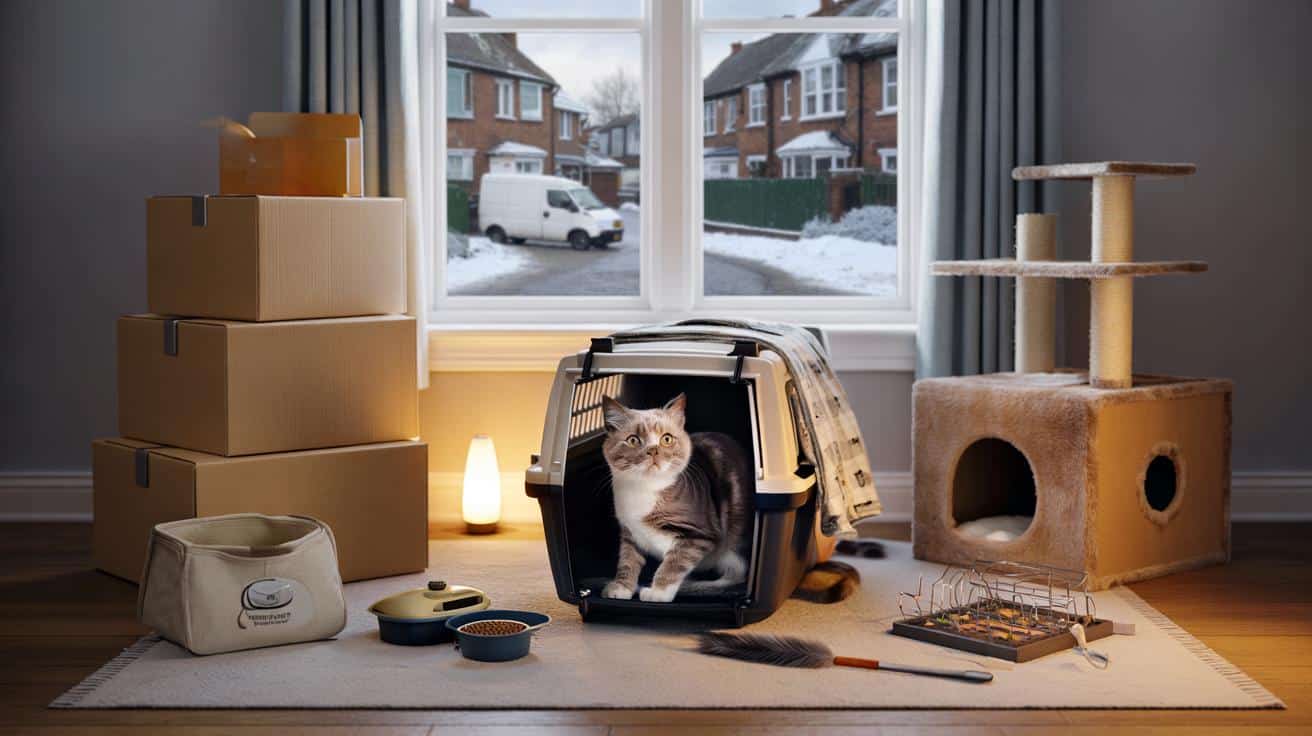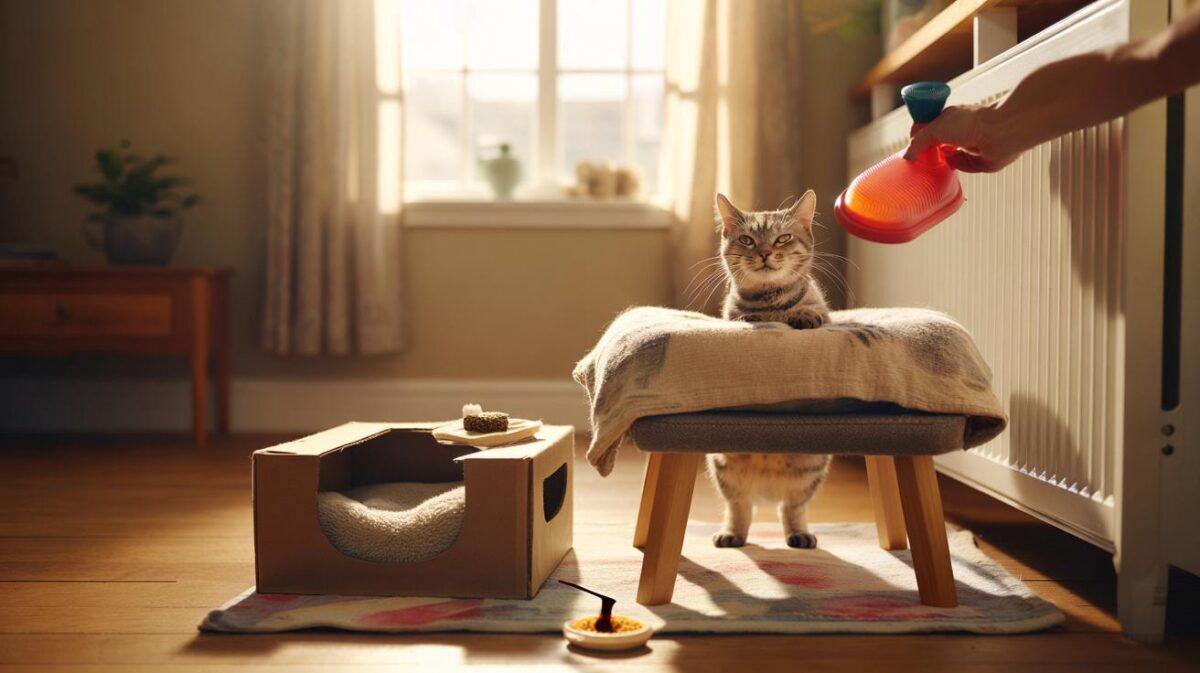Winter relocations can turn calm homes into wary, whiskered battlegrounds.
With an estimated 11 million pet cats in the UK, thousands of families will be boxing up lives before spring. Shorter days, cold snaps and strangers at the door unsettle even the bravest moggy. Here’s a practical plan to steer you and your cat through the upheaval with fewer scratches, fewer escapes and far more purrs.
Why winter moves rattle cats
Cats map their world through scent and routine. When boxes arrive, smells change and pathways disappear. Daylight fades early, which narrows their confidence window. Heaters hum. New furniture lands with a thump. Noise and novelty raise arousal levels and shift behaviour fast.
Scent equals safety. Keep familiar smells close, everywhere your cat rests, travels and eats.
Winter adds extra pressure. Roads clog. Timings slip. People rush. Cats notice. Predictability falls, stress climbs, and the risk of door-dashing rises. Planning removes surprises and restores control.
The four-step plan to keep your cat steady
Step 1: make the carrier a safe base
Turn the carrier from a trap into a den. Place it open in a living area seven to ten days before moving. Line it with a worn T‑shirt, the favourite blanket and a sprinkle of treats. Feed near it, then inside it. Play tunnel games through it once a day. Reward every approach.
Bring out a few empty boxes early. Let your cat investigate them. Add a soft throw that already carries cheek-rub scents. If you use pheromone products, spray the carrier 15 minutes before practice sessions and again on the day of travel.
- Check the microchip number and update your address with the database.
- Order a quick‑release collar and a visible ID tag with the new postcode.
- Create a labelled “cat room” plan for both homes.
- Pack a dedicated “cat bag”: food for three days, litter, tray, scoop, wipes, small bin bags, medications.
- Photograph your cat and note markings in case of an escape.
- Book a vet chat if your cat has travel sickness or severe anxiety.
One room, one carrier, one calm voice: these three anchors lower the risk of panic and flight.
Step 2: manage the moving-day storm
On the morning, confine your cat to a quiet room with the door shut and a clear sign. Set up the carrier, water, a light meal, the litter tray and bedding. Keep blinds down to reduce visual triggers. Ask movers not to enter this room.
Fit the carrier before lifting. Check bolts and clips. Place a non‑slip mat inside. Load your cat last, when the house is almost empty. In the car, secure the carrier on the back seat with a seatbelt or wedge it on the floor behind the front seat. The Highway Code expects animals to be suitably restrained while driving.
Heat the car to a steady, cosy temperature. Avoid loud music. Drive smoothly. Plan a direct route. Skip sedation unless a vet has agreed a specific protocol. Most sedatives can worsen disorientation and make cats wobblier on arrival.
Step 3: nail the first 72 hours in the new home
Start small. Open the carrier in a single “sanctuary room”. Include these zones: food and water in one corner, a litter tray far from bowls, a safe hide (cardboard box with a side door), and vertical space near a window. Keep that bedding unwashed for at least a week.
Rub a soft cloth on your cat’s cheeks and gently wipe skirting boards and door frames at cat height. Familiar scent trails speed up settling. Keep routines tight: feed at the old times, offer two short play sessions daily and keep voices low. Expand access one room at a time after your cat eats, grooms and uses the tray as normal.
- Monitor appetite twice daily.
- Count toilet visits and check stool consistency.
- Watch for hiding that lasts most of the day.
- Note any panting, pacing, growling or house‑soiling.
If your cat stops eating for 24 hours, calls out at night without settling, or strains in the tray, call your vet. Early support prevents spirals.
Step 4: rebuild routine and outdoor access
Hold off outdoor access for two to three weeks. When behaviour looks steady, pick a calm, dry morning. Feed a half portion, clip on the quick‑release collar and open the door to a small, fenced area. Keep the first outing to 10 minutes. Call back with the food bowl. Repeat daily, slowly increasing time and range.
Use a recognisable cue such as a whistle before each meal. Most cats learn to return to that sound. If you have multiple cats, stagger access to prevent disputes. Provide two resources per cat (bowls, beds, trays) plus one extra, spaced apart to remove competition.
Timelines, numbers and small fixes that change outcomes
Timeframes help people stay calm. Here is a simple guide you can follow without second‑guessing:
- Carrier acclimation: 7–10 days before the move.
- Pheromone spray: 15 minutes before travel and twice daily for the first week.
- Car feeding: a lighter meal, 3–4 hours before departure to reduce nausea.
- Sanctuary room: minimum 48–72 hours, then graded access.
- Outdoor access: 14–21 days after arrival, earlier only if behaviour is fully settled.
Keep food, water and litter in consistent places for 30 days. Predictability breeds confidence after a move.
What to watch and when to act
Cats show stress in small ways first. Address the early signals and you avoid bigger problems later.
- Reduced grooming, dandruff or a dull coat over a week points to persistent stress.
- Urinating outside the tray can reflect fear, pain or dirty litter. Clean with enzymatic products and review layout.
- Night‑time yowling may ease with a warm bed, a timer light and late play.
- Swipes at doorways suggest doorway ambush. Add two routes between rooms and extra perches.
Two practical add‑ons for a smoother move
Legal and safety checks you might miss
In England, most cats over 20 weeks must be microchipped, and details kept up to date. Update your database as soon as you move. Consider a spare tag with a temporary number during the moving week. For travel, rule 57 of the Highway Code expects animals to be restrained so they do not distract the driver. A robust carrier is the simplest way to comply and protect your cat in a sudden stop.
Make stress science work for you
Short, daily play reduces cortisol. Aim for two 10‑minute sessions with a wand toy, ending with a small snack. This cycle mimics hunt‑eat‑rest and helps cats sleep. Puzzle feeders slow eating and keep minds busy while you unpack. For very anxious cats, speak to your vet about a short course of anti‑nausea medication or a calming supplement with evidence behind it.
Extra ideas for tricky cases
Multi‑cat households benefit from staged introductions in the new home. Swap scents between cats using soft cloths before face‑to‑face meetings. Add extra litter trays and resting spots to dilute tension. If your old home was noisy, sound‑dampening rugs and door seals can make the new place feel instantly safer.
Seasonal hazards multiply in winter moves. Keep antifreeze locked away, as tiny amounts can harm cats. Check plants before you accept housewarming bouquets; lilies are dangerous. Radiators and wood burners attract cats, so fit guards where needed. These small checks reduce risk while you rebuild your cat’s sense of place.
Want a quick rehearsal? Pack one room a week early and run a mini‑move. Set up a sanctuary space in another room, shift a few core items, and practise the routine. You will spot weak points in your plan, and your cat will learn that change can happen without losing the comforts that matter.
Finally, think like a cat. Keep pathways clear, create height, place beds where your cat can watch without being watched, and keep familiar smells close. Do that for 30 days, and most cats settle faster than you expect, even in the darkest weeks of the year.








